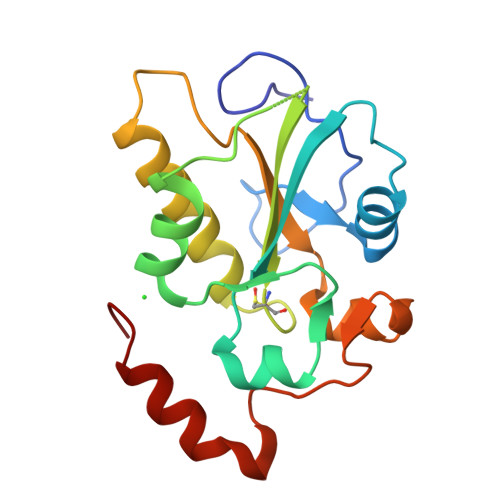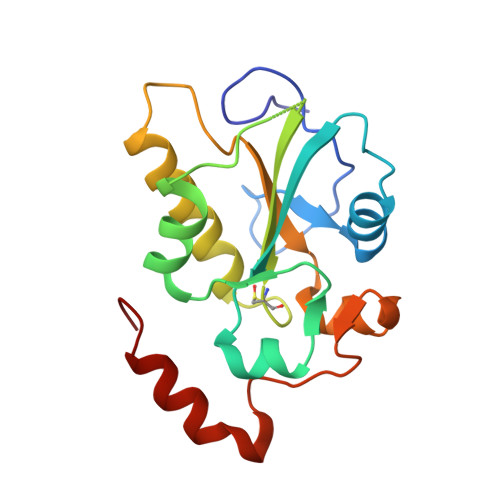Structural Mechanism of Oxidative Regulation of the Phosphatase Cdc25B via an Intramolecular Disulfide Bond
Buhrman, G.K., Parker, B., Sohn, J., Rudolph, J., Mattos, C.(2005) Biochemistry 44: 5307-5316
- PubMed: 15807524
- DOI: https://doi.org/10.1021/bi047449f
- Primary Citation of Related Structures:
1YM9, 1YMD, 1YMK, 1YML, 1YS0 - PubMed Abstract:
Cdc25B phosphatase, an important regulator of the cell cycle, forms an intramolecular disulfide bond in response to oxidation leading to reversible inactivation of phosphatase activity. We have obtained a crystallographic time course revealing the structural rearrangements that occur in the P-loop as the enzyme goes from its apo state, through the sulfenic (Cys-SO(-)) intermediate, to the stable disulfide. We have also obtained the structures of the irreversibly oxidized sulfinic (Cys-SO(2)(-)) and sulfonic (Cys-SO(3)(-)) Cdc25B. The active site P-loop is found in three conformations. In the apoenzyme, the P-loop is in the active conformation. In the sulfenic intermediate, the P-loop partially obstructs the active site cysteine, poised to undergo the conformational changes that accompany disulfide bond formation. In the disulfide form, the P-loop is closed over the active site cysteine, resulting in an enzyme that is unable to bind substrate. The structural changes that occur in the sulfenic intermediate of Cdc25B are distinctly different from those seen in protein tyrosine phosphatase 1B where a five-membered sulfenyl amide ring is generated as the stable end product. This work elucidates the mechanism by which chemistry and structure are coupled in the regulation of Cdc25B by reactive oxygen species.
Organizational Affiliation:
Department of Molecular and Structural Biochemistry, 128 Polk Hall, CB 7622, North Carolina State University, Raleigh, North Carolina 27695, USA.


















